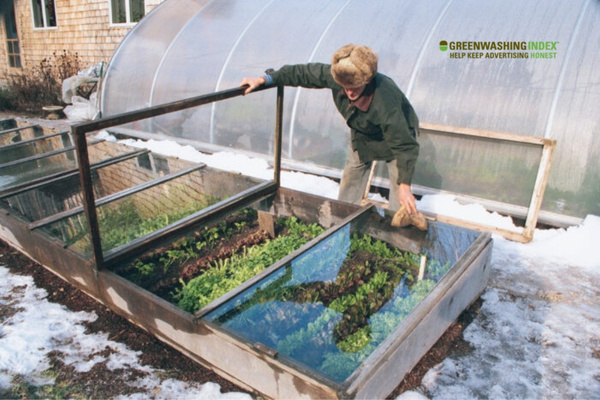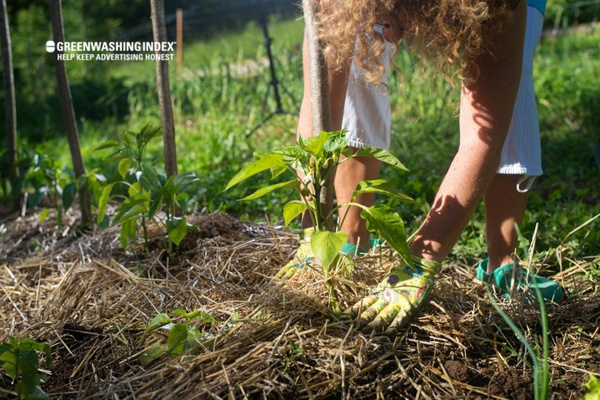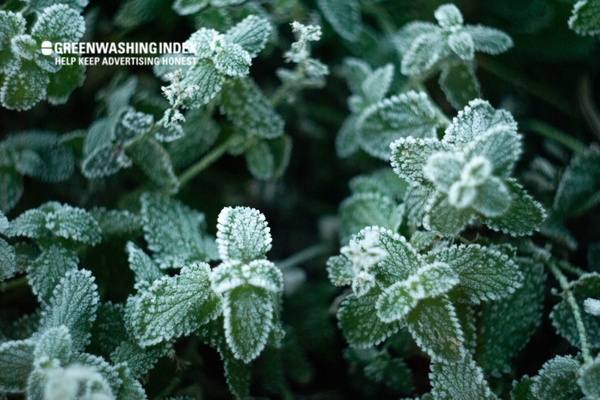

Is your green thumb itching to dig into the earth despite the chill? If the dropping temperatures have you dreaming of lush veggies and blooming flowers, you’re ready to dive into the enchanting world of winter gardening.
Starting a garden during winter might seem like a task only for those living in mild climates, but with the right tips and tricks, almost anyone can enjoy fresh greens in the crisp cold air. Let me be your guide on this frosty adventure and uncover how your garden can thrive even when Jack Frost is nipping at your nose.
Mastering your garden during winter doesn’t mean you need to brave icy winds and frozen soil with hope alone. It starts with understanding what plants can endure chilly weather, preparing protective structures, and knowing how to nurture nature’s green treasures when many sleep under blankets of snow.
With a bit of planning and clever care, you’ll find that some plants actually prefer cool conditions! Savor sweet victories as root vegetables plumb up beneath frost-kissed foliage while leafy greens celebrate in cool comfort—all in your very own winter wonderland.
As the world around us takes on a hush under blankets of snow, winter gardening becomes a peaceful pastime. It’s like nurturing a tiny spark of life in the quiet calm of the colder months. I’ll share with you the crux of what this delightful activity entails and why it can be such a heartwarming experience even as temperatures drop.

Winter gardening involves taking care of plants during the cold months. Unlike in spring or summer, plants in winter face cold air, less sunlight, and sometimes snow. This means I need to know which plants can live in the cold and how to protect them.
In winter gardening, I prepare by picking out tough plants that don’t mind the chill. Some greens like kale and spinach, root vegetables like carrots and beets, and some flowers even bloom when it’s cold! But it’s not just about choosing the right plants—there’s more.
Here are key things I do in winter gardening:
With these steps, I help my garden make it through the chilly season.
Taking on a garden during colder months comes with benefits that make it rewarding:
During these cooler times, watching over a garden provides unique joys—and fresh air! Plus, having greenery around combats those winter blues by keeping me connected to nature even as most of the world takes a sleepy break until spring.
By following simple tips for caring for my green friends amidst snowflakes and frosty mornings, I ensure both their survival and mine through enjoyment, all thanks to mastering the art of winter gardening!
Also Read: Indoor Greenhouse Magic: Grow Plants All Year!
Winter can be tough, but that doesn’t mean your green thumb has to rest. In fact, with some good planning and the right approach, you can enjoy winter gardening and keep your love for growing plants alive through the colder months.

Let’s look at how to make the most of your garden when it’s cold outside.
When setting up a garden for winter, think about what style works best for you and your space. There are a couple of options you might consider:
It doesn’t matter which style you choose as long as it fits what you want from winter gardening.
Some plants do much better than others when the temperature drops. For a successful cold-weather garden, choose plants that can handle frost and don’t mind a bit of snow sometimes too. Here are some hardy choices:
Make sure these get good drainage as they don’t like wet roots which could freeze.
Always check plant labels or ask at your local nursery before buying them; this ensures they’ll thrive in your specific winter conditions.
By carefully choosing both the type of garden and the plants within it, I find myself able to enjoy gardening all year round – even when there’s snow on the ground!
Winter gardening can be a joyful challenge. To ensure your garden thrives during the colder months, it’s key to prepare with care. Here, I’ll share some crucial tips on how to prep your soil and when to plant your winter favorites.
Healthy plants start with healthy soil, especially during winter. Follow these steps for optimal plant health:
Taking these steps will create strong foundations for whatever you choose to grow this winter.
To reap what you sow in winter gardening, timing plays a big part!
It’s not just “what” but “when” that makes all the difference in successful harvests come springtime when practicing winter gardening! By following these scheduling guidelines carefully tailored to cold-weather conditions, you give each crop its best shot at flourishing despite the chill.
Also Read: Self-Sufficient Garden: Top Reasons to Start This Spring!
When the chill of winter tries to nip at my delicate greens, I know it’s time to step up my game. The right techniques can be the difference between a thriving winter garden and a frozen wasteland. Let’s get into two important methods that keep my plants warm when the temperatures drop.

When it gets cold, plants shiver just like we do. Okay, maybe not shiver, but they sure feel the freeze! If I want my leafy friends to make it through winter, I need a game plan. Let me share some neat ways to keep my garden cozy when Jack Frost comes knocking.
Mulching is like tucking your plants in with a warm blanket. Here’s what you do:
This blanket keeps the ground from freezing and helps save those precious roots. Super simple yet super effective!
Now let’s talk cloches – these are like little mini greenhouses for each plant. Making them is a piece of cake:
Cloches trap heat from the sun during the day and keep your plant snug as a bug at night.
With these tricks up my sleeve, my winter garden has a fighting chance against old man winter!
What about when mulching and cloches aren’t enough? That’s where some nifty structures come into play.
First off – cold frames:
Building one can be as simple as framing out an old window on hinges attached to a wooden box. Open it during sunny days; close it when frost bites.
Moving on to hoop tunnels:
Here’s how to set one up:
Ta-da! Now you’ve got a great spot for growing veggies even when it’s cold outside.
And if you’re really serious about this winter gardening thing, consider investing in a greenhouse:
A greenhouse is basically a big glass house where summer never ends – well inside at least!
Whether you buy one ready-made or go full-on DIY mode creating your own from old windows doesn’t matter; what counts is giving those cucumbers tropical vibes while snowflakes dance outside!
So there you have it – keeping my green buddies thriving in chilly weather isn’t rocket science! With mulch blankets, snug cloches, fabulous frames, and tunnels plus greenhouses galore – there’s no reason these greens can’t grow all year round!
Also Read: Greenhouse Gardening: Your Ultimate Guide to Aquaponics
Winter gardening can be quite a challenge, but with the right approaches, you can keep your plants happy and healthy even in the cold months. There’s nothing like the joy of having a vibrant garden when most are dormant. Let’s talk about some solid strategies to make sure your winter crops thrive.
You might wonder how plants manage under a blanket of snow or when it seems too chilly for anything to grow. The secret is in understanding what they need and giving them just that—a mix of companion planting and crop rotation are key actions that support this goal.
Companion Planting
Companion planting means placing certain plants together because they help each other grow. It works in summer, and it definitely helps during winter too. Here’s how you do it:
When doing companion planting, remember one thing: not every plant plays nice! Some combinations may hinder rather than help growth, so double-check which pairs work best for winter settings.
Crop Rotation
This trick isn’t just for commercial farmers; small garden keepers should take note too:
By rotating crops seasonally (which includes winter), you ensure no part of your garden gets tired out or becomes an all-you-can-eat buffet for pests specialized in one type of plant.
Maximizing winter crop growth is about being smart with what you have—pairing up plants that support each other through rough times, moving things around so pests don’t settle down too comfortably, and keeping an eye on the balance within your little ecosystem even when snowflakes are dancing between your brussels sprouts.
Making these strategies part of my routine has transformed my own approach to cold-weather gardening considerably—and I’m always thrilled by what feels like small victories over nature’s harsher moods!
When it comes to winter gardening, taking care of plants is a bit different from other seasons. The cold weather means I need to think about how much water my plants really need. This is because plants usually grow slower when it’s colder, and there’s often more rain or snow to help keep the soil moist.

During the winter months, you don’t need to water your garden as often as you do in the summer. Here are some tips on how I adjust my watering schedule for efficient water use in winter gardening:
Remember these points whenever dealing with plants during those chilly days! Water wisely so your green buddies can make it through until spring blooms anew.
Also Read: Container Gardening: Easy Setup for Beginners!
Winter gardening takes patience and a bit of know-how, especially when the cold weather makes growing plants a challenge. But for those of us who love our gardens, the winter season is just another opportunity to get creative. If you’ve been gardening through the winters and you’re ready for some advanced tips, I’ve got some tricks up my sleeve that could help you.
When it comes to pushing the limits of winter gardening, there are some pretty clever methods to keep those plants going strong:
Remember, these methods might need some tweaking depending on where you live and what kind of winter weather you get, but they’re great strategies for giving your winter garden a little extra warmth and protection. So don’t let the cold stop you; with these tips up your sleeve, I bet your neighbors will be peeking over the fence wondering how your greens look so lively despite Jack Frost’s best efforts!
In my journey through winter gardening, I’ve learned that with a mix of planning, preparation, and protection, anyone can transform the cold months into a fruitful time for nurturing plants. All it takes is understanding which plants can bear the chill, preparing our soil to become a warm bed for seeds, and shielding our greenery from frost’s harsh bite.
I find immense joy in checking on my winter crops, covered with frost-resistant love, growing steadily despite the freezing temperatures.

Don't let aphids, slugs, and caterpillars ruin another plant. Take back control with simple, natural methods that actually work.